标签:redis github sage als png 一个 doc sendto man
Asp.Net SignalR已经出来很久了,但是一直没有静下心来好好看看。昨天花了几个小时的时间看了下。首先借鉴了官方文档,如何搭建一个SignalR的Demo。
SignalR地址:https://github.com/aspnet/SignalR
所以为了快速搭建和体验.Net Core版本的SignalR,我选择了下载官方的Demo和参考官方给的教程。所以具体的搭建过程我就不再本文中写了。
官网给出的DEMO运行如下图:
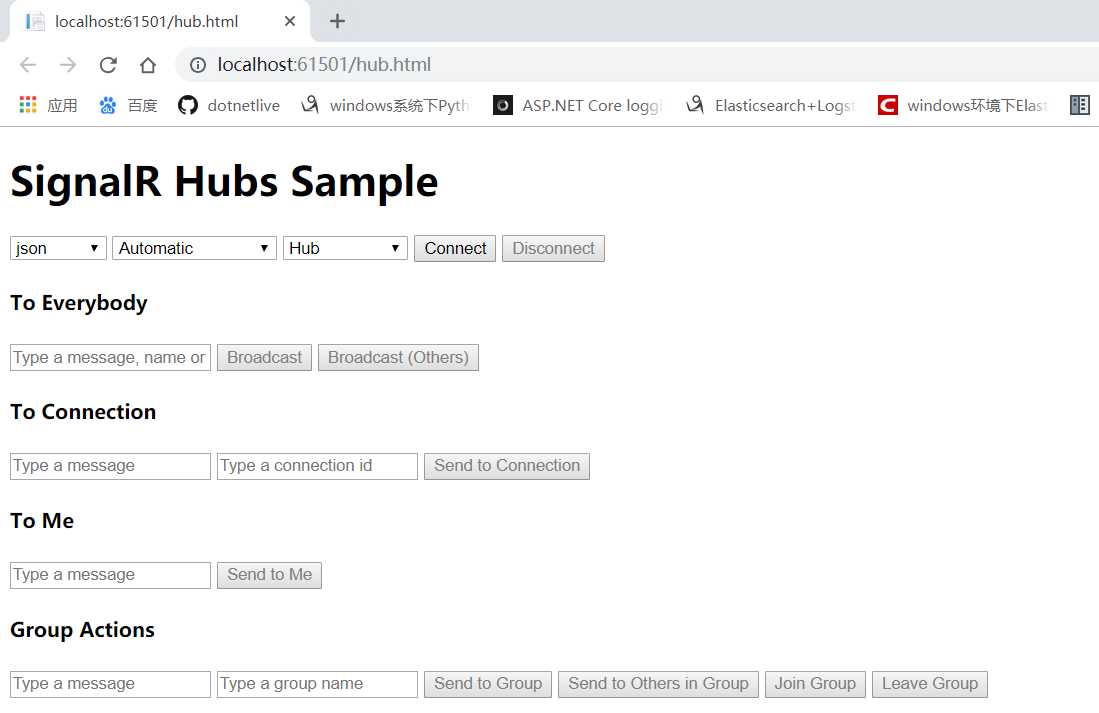
点击connect,查看一下network。可以发现,它在当前浏览器支持三种方式。
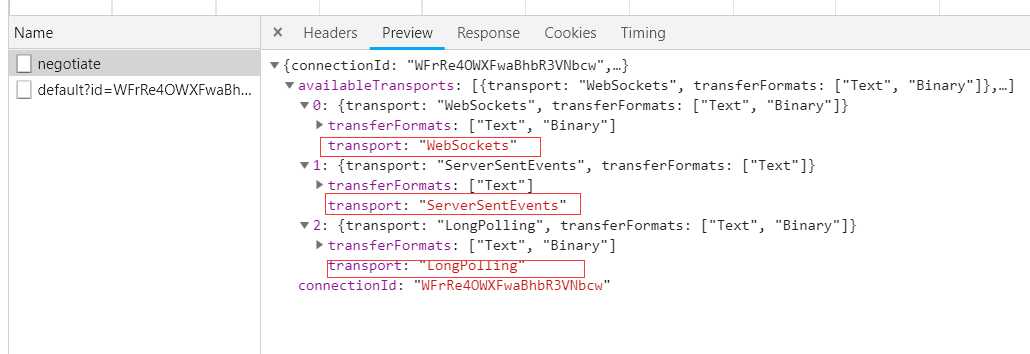
而且和.NET Framework版本不同的是,新版SignalR中的Hub类型也是蛮丰富的。Demo中给出了 普通Hub,DynamicHub,Hub<T> 三种类型。我们去看看其中的区别吧。
普通Hub
查看定义,可以看到普通Hub中的Clients类型是 IHubCallerClients
namespace Microsoft.AspNetCore.SignalR
{
//
// 摘要:
// A base class for a SignalR hub.
public abstract class Hub : IDisposable
{
protected Hub();
//
// 摘要:
// Gets or sets an object that can be used to invoke methods on the clients connected
// to this hub.
public IHubCallerClients Clients { get; set; }
//
// 摘要:
// Gets or sets the hub caller context.
public HubCallerContext Context { get; set; }
//
// 摘要:
// Gets or sets the group manager.
public IGroupManager Groups { get; set; }
//
public void Dispose();
//
// 摘要:
// Called when a new connection is established with the hub.
//
// 返回结果:
// A System.Threading.Tasks.Task that represents the asynchronous connect.
public virtual Task OnConnectedAsync();
//
// 摘要:
// Called when a connection with the hub is terminated.
//
// 返回结果:
// A System.Threading.Tasks.Task that represents the asynchronous disconnect.
public virtual Task OnDisconnectedAsync(Exception exception);
//
// 摘要:
// Releases all resources currently used by this Microsoft.AspNetCore.SignalR.Hub
// instance.
//
// 参数:
// disposing:
// true if this method is being invoked by the Microsoft.AspNetCore.SignalR.Hub.Dispose
// method, otherwise false.
protected virtual void Dispose(bool disposing);
}
}
IHubCallerClients 定义如下:
public interface IHubCallerClients : IHubCallerClients<IClientProxy>, IHubClients<IClientProxy>
{
}
而框架又给IClientProxy增加了扩展方法:SendAsync
所以在普通Hub中,定义客户端方法的时候,需要把方法名当作参数传入SendAsync方法中。例如如下代码:
public Task Send(string message)
{
return Clients.All.SendAsync("Receive", $"{Context.ConnectionId}: {message}");
}
DynamicHub
DynamicHub我是比较喜欢的,因为他和 Framework版的是一样(或者说看起来是一样的)的。动态Hub我们就可以不必拘泥于只能调用SendAsync方法了。例如:
public Task SendToOthers(string message)
{
return Clients.Others.ThisIsMyReceiveMethod($"{Context.ConnectionId}: {message}");
}
DynamicHub的Clients类型为:DynamicHubClients ,它的内部变量全都是dynamic类型的。

Hub<T>
泛型Hub就把规约交给开发者制定。在Demo中 Hub<IChatClient> 中的IChatClient接口定义了Receive方法,因此Clients中的对象可以调用Receive方法。同理,我们可以根据业务需要定义自己的方法。至少从代码上看会显得更加通俗易懂一些。比如:
public interface IChatClient
{
Task Receive(string message);
Task LoginSuccess(long userId);
}
public Task Login(long userId)
{
return Clients.Caller.LoginSuccess(userId);
}
其实从代码上来看的话,他们都是Hub,只不过是不同的扩展实现而已。而泛型Hub不过是用户自定义泛型接口,而默认Hub中的默认泛型接口为:IClientProxy.所以看到这里,如果我就想使用原生的Hub而又想自定义方法怎么办呢?很简单,加扩展就可以了。
为什么自己加就可以呢,其实 SendAsync 就是扩展方法,它内部也是调用了SendCoreAsync方法。于是乎,写下自己的扩展方法,那这样子就很灵活了。我们把method参数去掉,直接写死试试:
public static Task LoginAsync(this IClientProxy clientProxy, string message, CancellationToken cancellationToken = default(CancellationToken))
{
return clientProxy.SendCoreAsync("LoginSuccess", new object[] { message}, cancellationToken);
}
其实说白了,这个扩展方法还是需要传入method参数的,只不过封装了一层(似乎感觉这么做有意义吗?哈哈,还是老老实实用泛型吧),那么我们在去看Hub中的方法,修改Send方法如下:
public Task Send(string message)
{
return Clients.All.LoginAsync($"{Context.ConnectionId}: {message}");
}
是不是这样子就实现了自己自定义方法了呢?个人觉得这么写还绕了一圈,不如用泛型或者Dynamic了。
运行一下,看看效果:
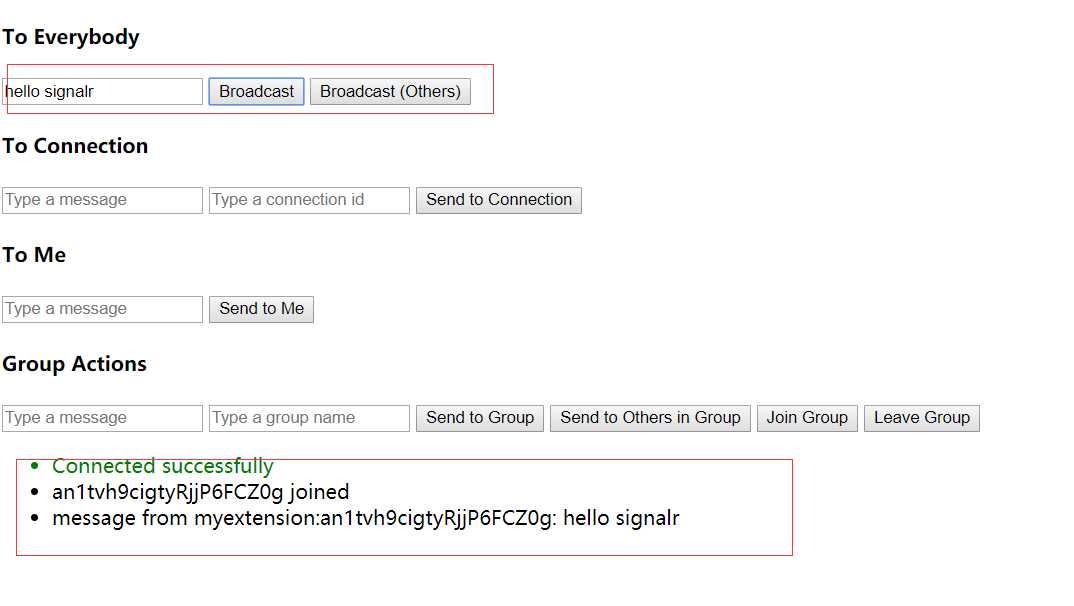
其实我也是抱着试试的态度,没想到还真是这样,和新方法就是SendCoreAsync,而其他方法只不过是上层封装使得代码更加通俗易懂。
Demo中的其他例子就不再演示了。广播,一对一,一对多,加入组,退出组等基本和之前一样。这里在演示一下使用Redis做不同实例之间的通信效果。
首先程序集是不能少的:Microsoft.AspNetCore.SignalR.Redis,然后在Startup中补充代码:

打开Redis客户端,使用MONITOR命令监听一下,从程序启动,到连接,在发送一条广播消息:hello redis。 redis 监听结果如下:

所以,PUB/SUB还是立了大功呢。
这里用CMD运行了两个实例,端口分别为 8881,8882来模拟两个站点。
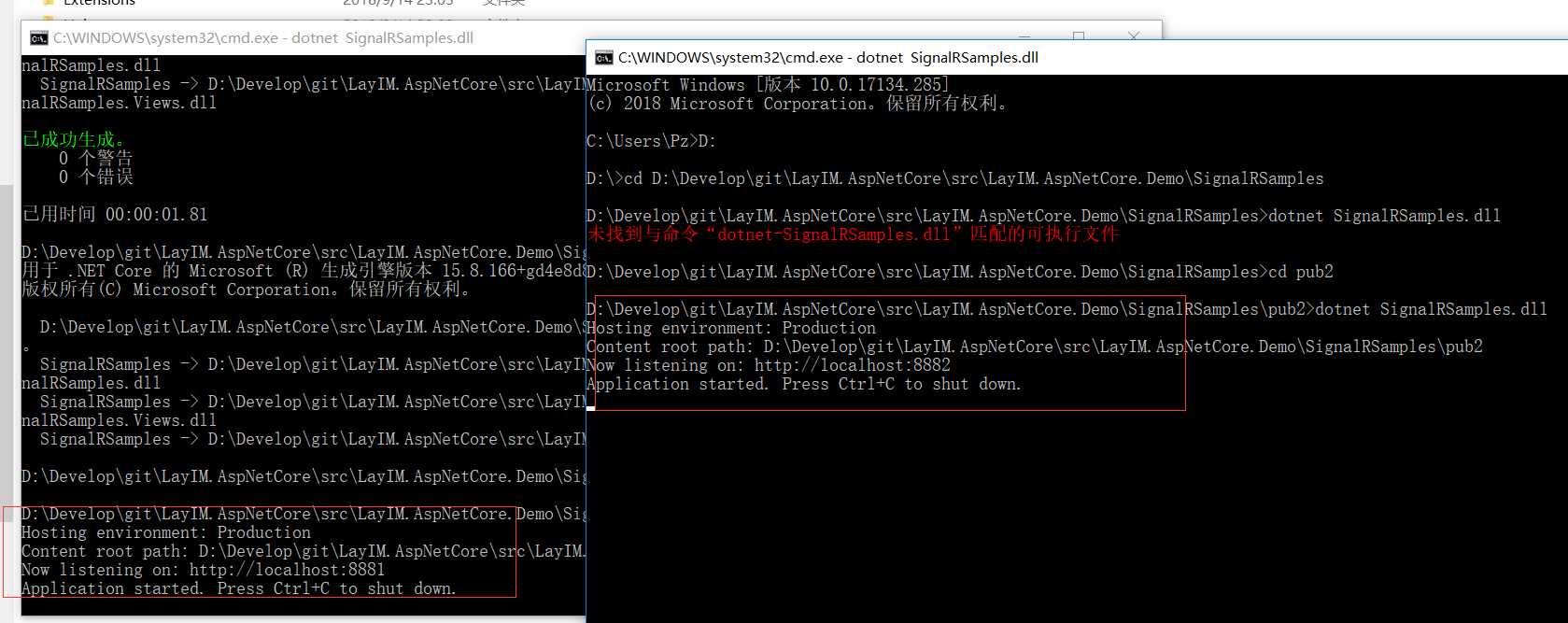
演示效果如下:
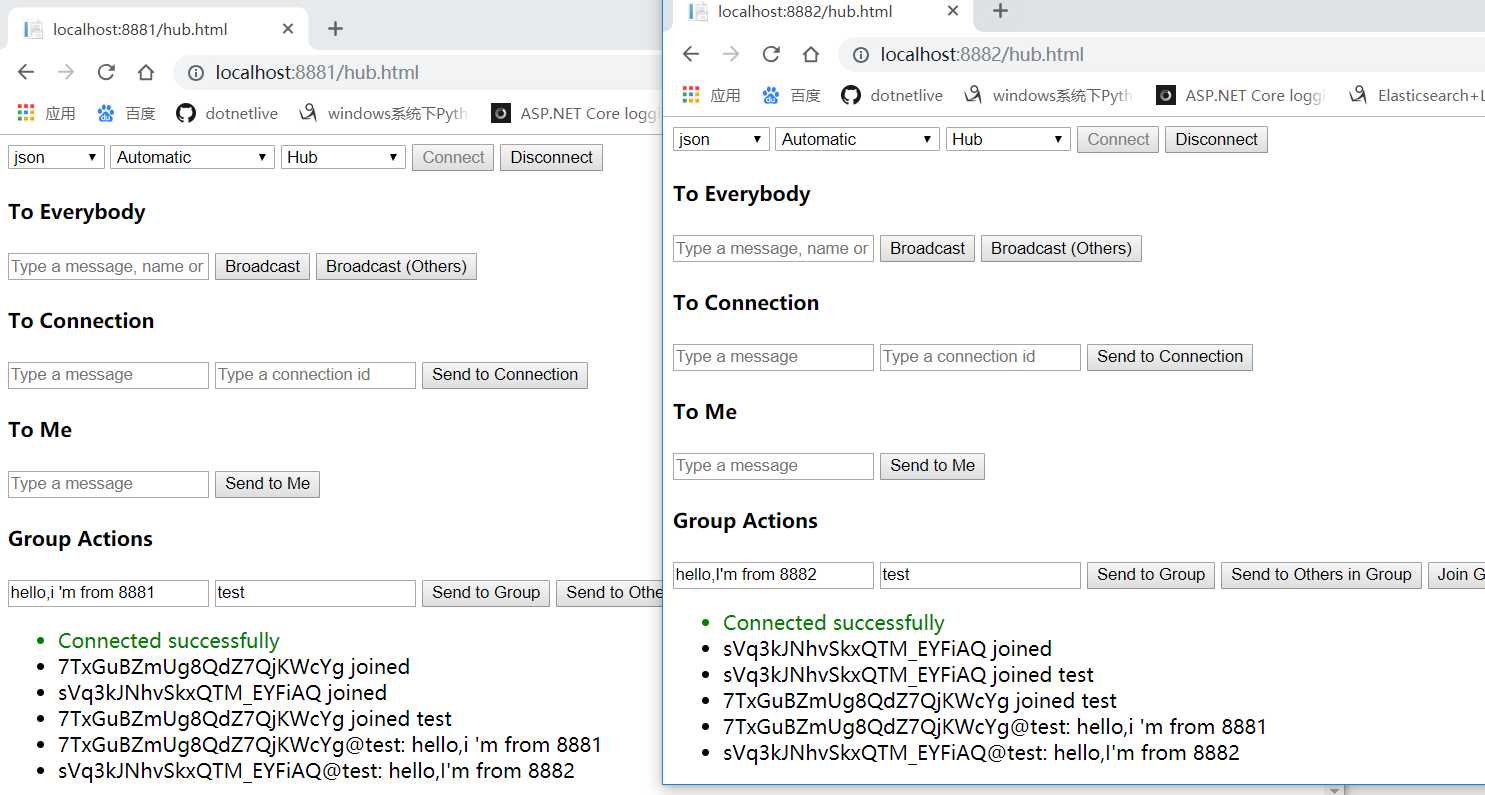
没问题的哦,其实仔细想想,虽然运行了两个网站实例,但是连接信息都保存在同一个Redis上,那肯定通信是木的问题的啦。
只是简单的运行了一下DEMO,大致了解了一下 .Net Core SignalR的表层,至少跑Demo是跑起来了,并且使用Redis也是没有问题的。不过好像会出现运行一旦时间,程序自动停掉的问题,不知道是不是我电脑的问题。。今天就到这里吧,希望大家能有所收获。 本文代码地址:https://github.com/fanpan26/LayIM.AspNetCore/tree/master/src/LayIM.AspNetCore.Demo/SignalRSamples
标签:redis github sage als png 一个 doc sendto man
原文地址:https://www.cnblogs.com/panzi/p/9649315.html